For the women from Dessauer Ufer, 1995
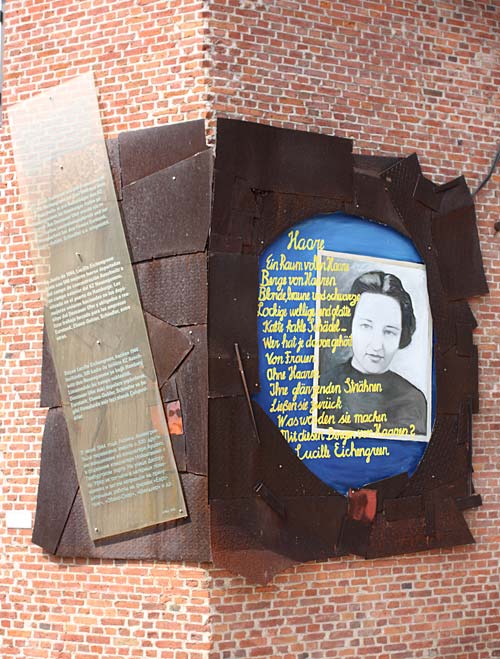
"For the women from Dessauer Ufer"
Neumühlen 16-20, south-east corner of the Lawaetz building.
Design and Realisation: Cecilia Herrero and Hildegund Schuster.
Sponsors: R&S Baugesellschaft.
Photo: johannes Kohl ©
One of the aspects of the port's history that people like to suppress and forget about is the forced labour by female concentration camp prisoners during the years of World War Two. One of them is Lucille Eichengreen, born in 1923 in Hamburg as the daughter Cecilie of the Jewish merchant family Landau.
At the age of 17 in 1941, after her father was murdered in Dachau concentration camp, she was deported to the Łódź Ghetto with her sister who was five years younger and their mother. She was the only member of her to survive the Nazi holocaust.
Following her selection process, in 1944 she was sent to Hamburg to clear away the rubble left by bombs in the port of her home city. With 500 other women, Cecilie Landau was interned in the former coffee warehouse "G" that was now being used as the satellite camp Dessauer Ufer of Neuengamme concentration camp. At four in the morning, the women were forced to go by boat to work in the petrol and oil factories, not returning until late in the afternoon.
The third mural of the Women's Open Air Gallery is an exemplary memento of their fate. The portrait of the young Cecilie Landau was painted from a photograph that originated in Bergen-Behlsen in October 1945 and is combined with lines from her poem "Hair", which she published in her book From Ashes to Life(1) after she had emigrated to the USA and got married. As a witness of the holocaust, she gave lectures in schools about her experiences in the Łódź Ghetto and Auschwitz concentration camp together with the Dessauer Ufer satellite camp of Neuengamme concentration camp in Hamburg.
The mural is painted on a metal panel and is the only painting in the Women's Open Air Gallery to be framed. The frame consists of different pieces and panels of metal with varying surfaces, and changes colour to a rusty, shimmering brown depending on the weather.
On the one hand, the frame is reminiscent of the mountains of rubble Cecilie was forced to salvage with the other women. It also resembles the framed photographs that remind families of their loved ones. And so this painting too wants to trigger our collective memory of the dreadful fact that Jewish men and women were destroyed by extremely hard labour and degrading working conditions, a fact that is generally at risk of being forgotten all too soon.
The metal panel continues round the edge of the building and forms the background for a Plexiglas panel. Here texts in Russian, Polish, German and Turkish(4) recall the women prisoners and names the companies that benefited from their forced labour, including Eurotank, Ebano-Oehler, Schindler.

At the inauguration of the mural on 8 May 1995,
Lucille Eichengreen
read from her memoirs (on the left); on the right: Emilija Mitrovic, formerly part of the Women's Open Air Gallery project, who organised the reading.
Photo: Elisabeth von Dücker ©
The memorial located at the margins of the port nearly did not happen. Originally the project team wanted to put the mural on a neighbouring building belonging to the city-owned Hamburg-Altonaer Fischmarkt GmbH (Fish Market). But permission was refused, probably due to fears that potential tenants could be scared off by the subject of the picture.
Fortunately, the Managing Directors of the nearby Lawaetz Foundation(2) came to the rescue and made the south-east corner of their building available. This saved the city from a great deal of embarrassment, as the mural was part of the ceremonies held on 8 May 1995 in memory of 50 years since the end of World War Two and National Socialism.
In her book, Lucille Eigengreen recalls the forced labour she was forced to do in the port of her home city: (3)
"The work was so hard. (...) We had to work in the shipyards where we were expected to remove heavy sections of warped, shredded steel beams and shards of glass, remains of huge window panes. It took incredible effort to move and lift the rubble. But we had no choice. For me, the piles of rubble reflected my own life. Nothing remained of the past apart from a few permanently damaged shards and fragments – and memories."
© Elisabeth von Dücker, 2011
Hair
A room full of hair,
Mountains of hair, blond, brown and black,
Curly, wavy and smooth.
Cold, bald skulls –
Whoever heard of women without hair?
They left their shiny locks behind them.
What will happen with these mountains of hair?
They’ll fill pillows, mattresses and chairs!
Will it worry those who use them?
These pillows and chairs,
Filled with human hair,
Soaked with blood, with tears and with suffering?
from the book: Lucille Eichengreen
Von Asche zum Leben ("From Ashes to Life") 2005 (2nd edition) p. 108.
The Plexiglas panel at the mural remembers the past with texts in
Russian, English, German, Polish and Turkish(4):
Люсиль Эйхенгрин был доставлен в подлагере концлагеря Нойенгамме с 500 женщин из концлагеря Освенцим. Там у Дeссaуeр Уфер, она была взята под склады. Они должны были, в частности, принудительный труд в компании Евро бак, Эбано-Оехлер, Шиндлер.
Together with 500 women, Lucille Eichengreen was deported from the Auschwitz concentration camp to a satellite camp of the Neuengamme concentration camp. There, on the Dessauer Ufer, they were interned in warehouses. They were forced to labour for firms such as Eurotank, Ebano-Oehler, Schindler etc.
Lucille Eichengreen wurde mit 500 Frauen aus dem Konzentrationslager Auschwitz in ein Außenlager des KZ Neuengamme transportiert. Dort am Dessauer Ufer brachte man sie in Lagerhallen unter. Sie mussten Zwangsarbeit leisten bei den Firmen Eurotank, Ebano-Oehler, Schindler u.a.
Lucille Eichengreen została zawieziona transportem z 500 kobietami z obozu koncentracyjnego Auschwitz do jednego z podobozów obozu Neuengamme w porcie w Hamburgu. Na Dessauer Ufer zostały internowane w halach magazynowych i przydzielone do pracy przymusowej m. in. dla firm Eurotank, Ebano-Oehler i Schindler.
Lucille Eichengreen, 500 kadınla birlikte Auschwitz toplama kampından Neuengamme’deki yerel toplama kampına nakledildi. Orada Dessauer Ufer’deki hangarlara yerleştirildiler. Eurotank, Ebano-Oehler, Schindler vb. firmaları için angarya çalışmak zorundaydılar.
8 May 1995
1 September 2016
Fifteen years after its inauguration, the mural had to be restored. It had suffered extensive frost damage and was restored by the artist Cecilia Herrero. Altona District provided financial support and also helped us in our efforts to ensure that Lucille Eichengreen could see the restored mural. By happy coincidence, it transpired that a photo of the mural had been used on the cover of Lucille Eichengreen's recently published book "Haunted Memories. Portraits of Women in the Holocaust"(5) This led to the idea to combine a reading from the book and a viewing of the mural. In cooperation with the Lawaetz Foundation and with support from Wilfried Weinke, the Women's Open Air Gallery invited the author to a reading.
As part of the Anti-War Day, the event on 3 September 2012 attracted a large, highly interest audience. Hamburg's Culture Senator Barbara Kisseler said in her speech: "Dear Mrs Eichengreen, I am so pleased to meet you in person today, I am deeply impressed." A reaction from the audience at this point underlined her comments. "I would like to say thank you with all my heart for this moving, incredibly impressive event. It is great that you have made it possible for us to meet Lucille Eichengreen!" (6)
The Women's Open Air Gallery sees this as confirmation of its intention to set a permanent memorial in public space to the darker sides of the city's history, in honour of this young woman who put all her energy into withstanding the murderous holocaust. With her "lessons for the world" (7) , to quote the name given to the books and recollections by her friend and American Professor Elizabeth Baer, Lucille Eichengreen remains an ever-present figure in the port and city of Hamburg. The mural in her memory acts as a very special artistic memorial in this part of the port.
© Elisabeth von Dücker, 2019
(1) Lucille Eichengreen Von Asche zum Leben, Bremen 2005 (2. Aufl.)
(2) Diese Stiftung Projekte, die Wohn-, Arbeits- und Ausbildungsplätze für sozial benachteiligte Menschen schaffen.
(3) Von Asche zum Leben, S. 111
(4) Many thanks for the translation to: Leslie Franke, Dr. Catharina Kunze, Lena Blank, Irfan Cure.
(5) Lucille Eichengreen: Haunted Memories. Portraits of Women in the Holocaust. Exeter: Publishing Works 2011.
(6) E-mail dated 13/9/2012 to Elisabeth von Dücker.
(7) Elizabeth Baer: Introduction. In: Lucille Eichengreen: Haunted Memories, p. 10.
Picture gallery
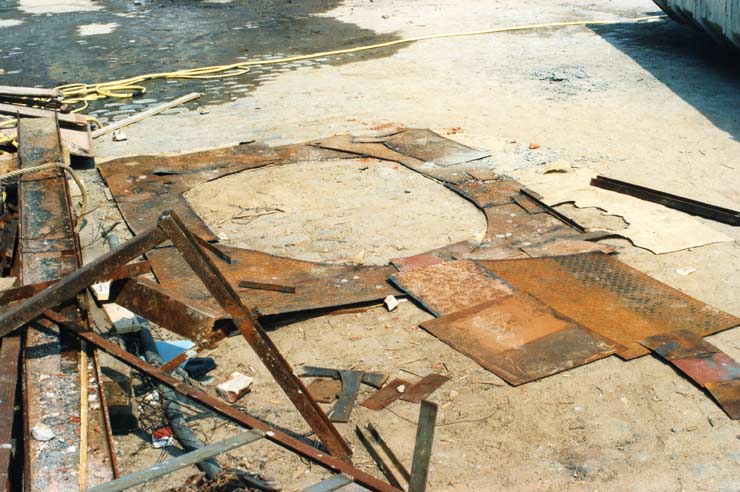
The iron frame - Photo: Hildegund Schuster ©

Hildegund Schuster
welding the frame
Photo: Emilija Mitrovic ©
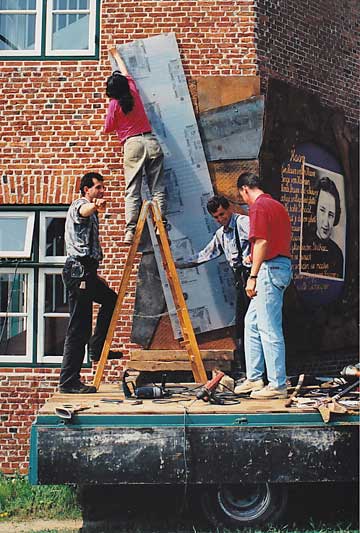
Cecilia Herrero on the ladder affixing the picture's metal panels
assisted by workmen.
Photo: Hildegund Schuster ©
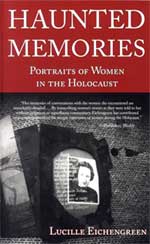
Book from Lucille Eichengreen:
"Haunted Memories. Portraits of Women in the Holocaust"
Exeter NH, 2011
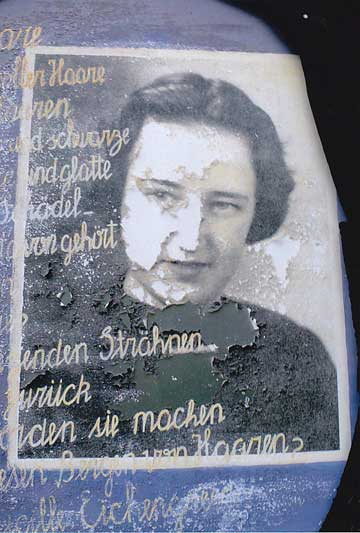
Damaged by the weather, restored in 2010.
Photo: Hildegund Schuster ©

Cecilia Herrero and Hildegund restore the painting
with financial support from Altona District, May 2010.
Photo: Elisabeth von Dücker ©
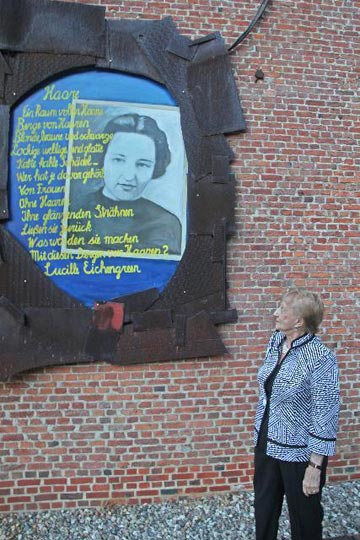
Lucille Eichengreen in front of the restored mural,
3 September 2012. Photo: Gesche Cordes ©
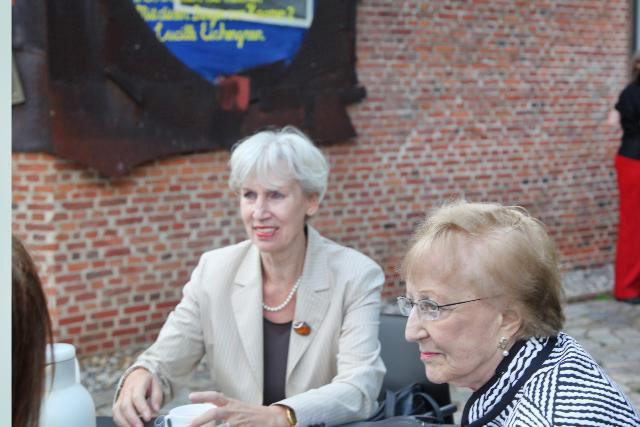
Lucille Eichengreen talking to Culture Senator Dr. Barbara Kisseler, on 3 September 2012.
Photo: Gesche Cordes ©
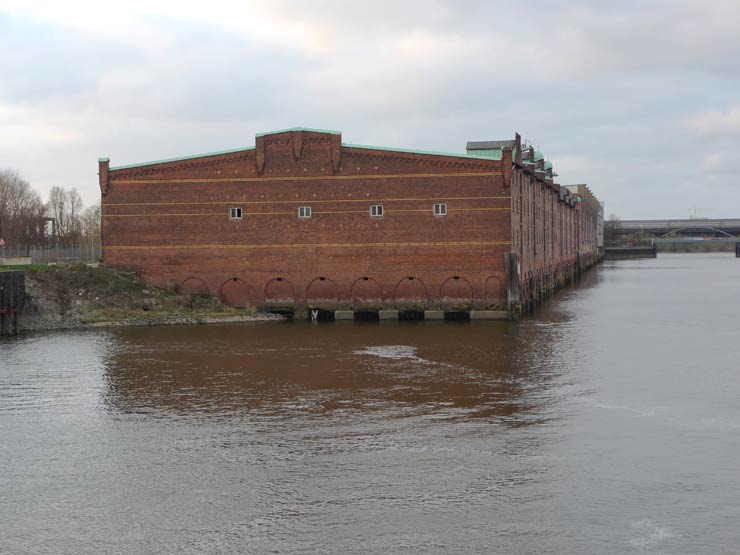
Warehouse G on Dessauer Ufer, near Veddel S-Bahn station, 2013 - Photo: Hildegund Schuster ©
More information about warehouse G: www.initiativedessauerufer.noblogs.org

